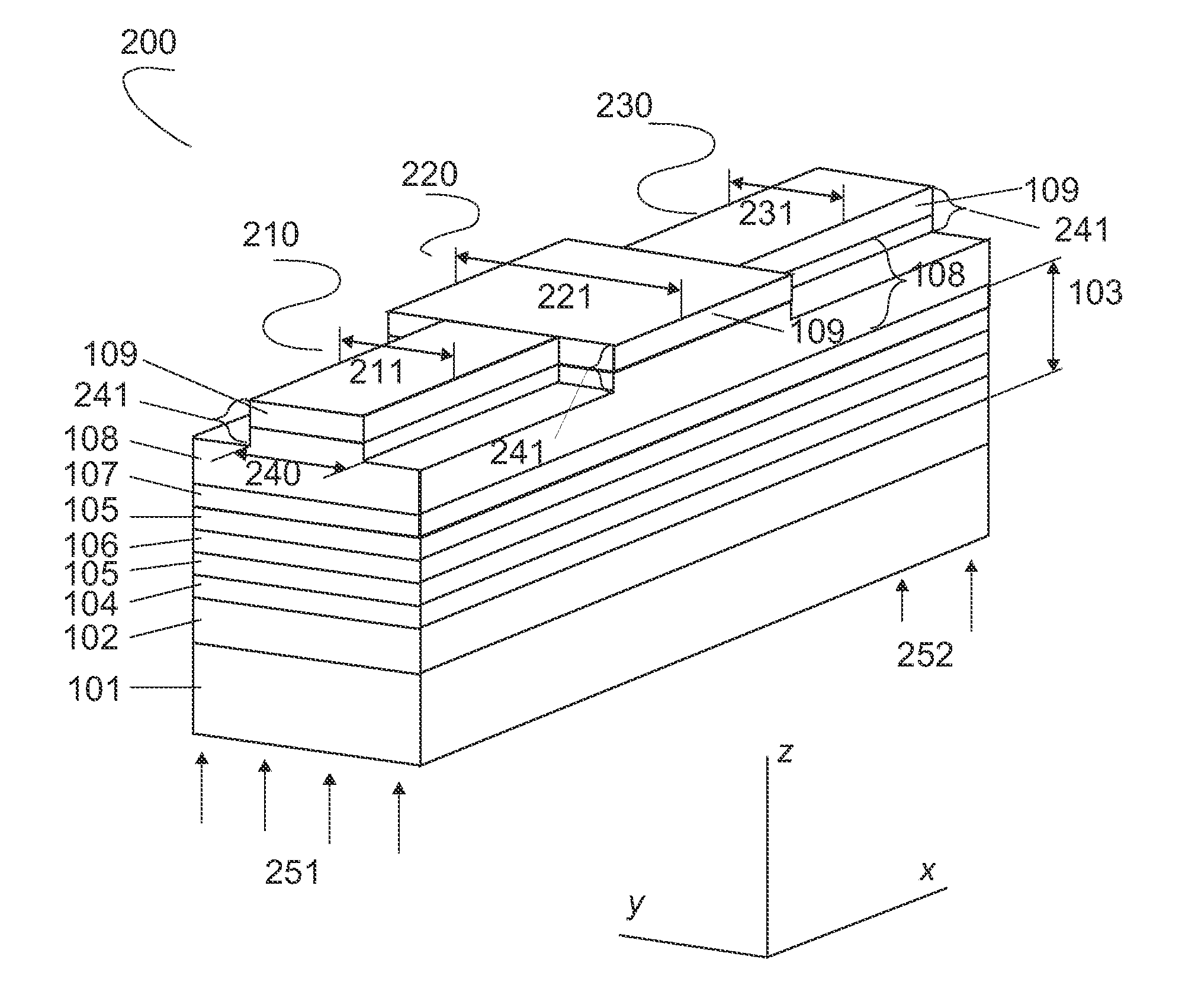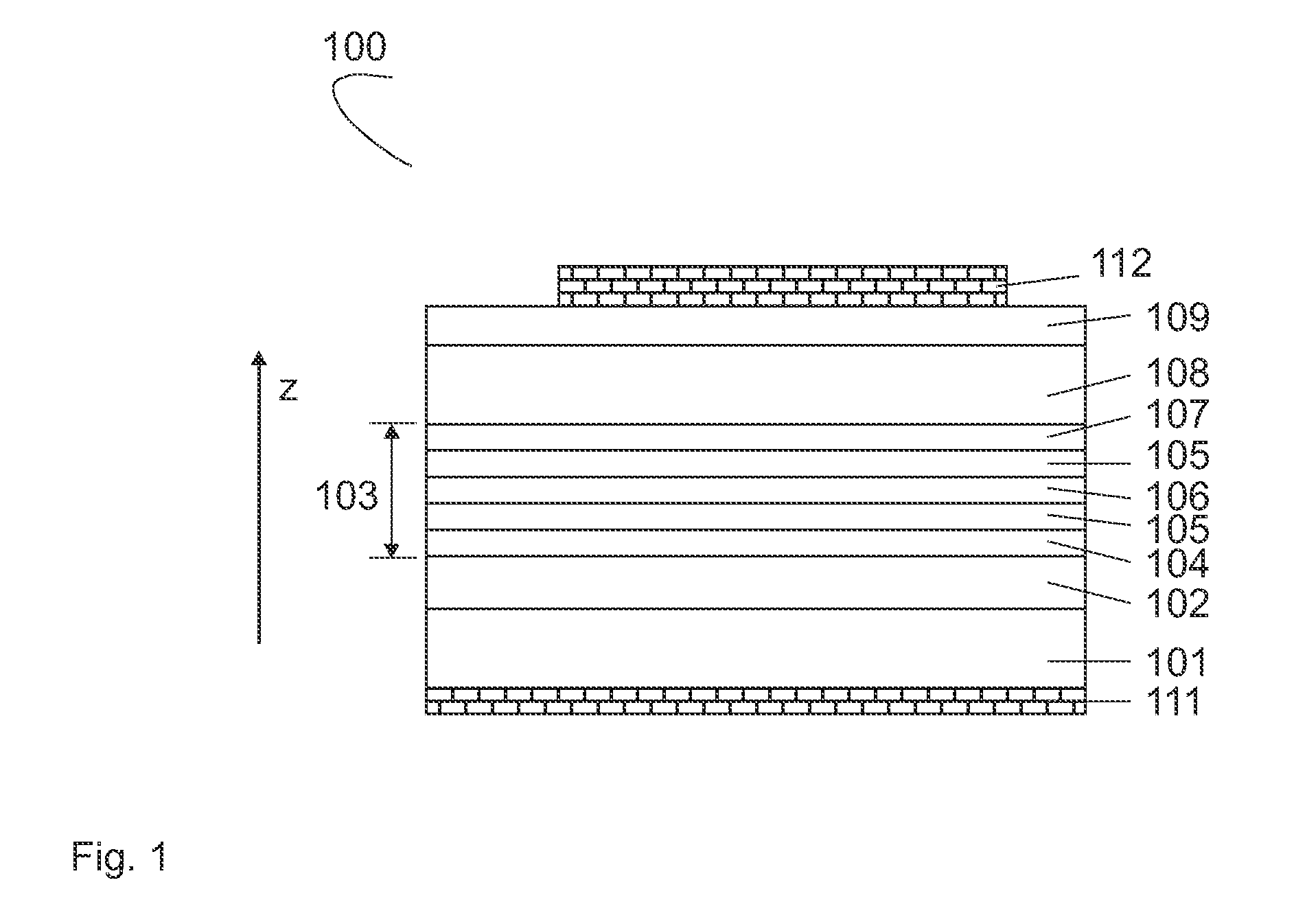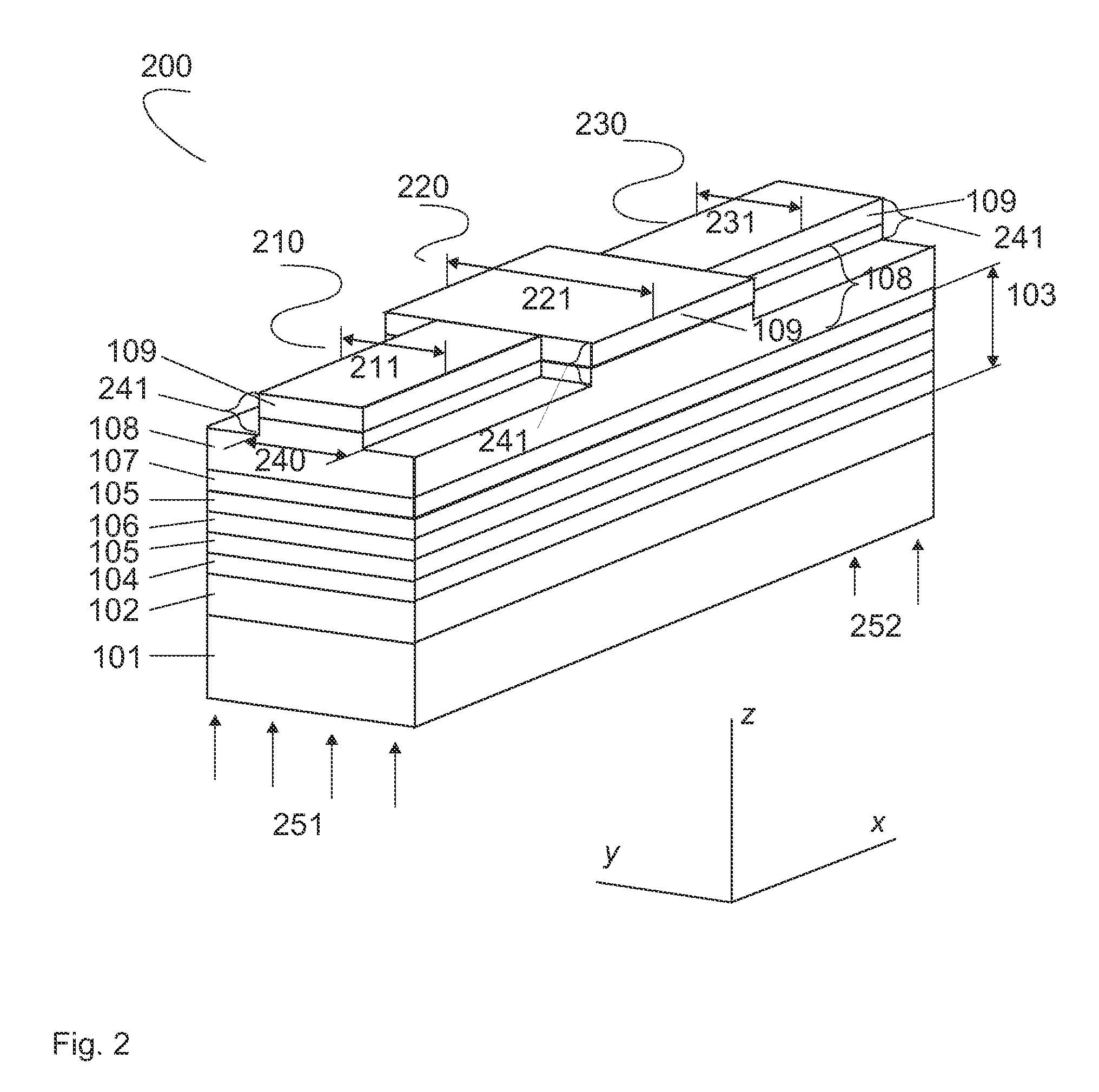High-Power Optoelectronic Device with Improved Beam Quality Incorporating A Lateral Mode Filtering Section
- Summary
- Abstract
- Description
- Claims
- Application Information
AI Technical Summary
Benefits of technology
Problems solved by technology
Method used
Image
Examples
Embodiment Construction
Filtering of Higher-Order Modes
[0061] A semiconductor optoelectronic device of the present invention exploits the filtering of higher order lateral modes. However, the device of the present invention does not use the quantum well intermixing required in U.S. Pat. No. 6,760,335, U.S. Patent Publication 2004 / 0120377 and the other prior art mentioned herein. The optoelectronic device may incorporate one or more of various types of gain elements. The optoelectronic device is free of the limitations and disadvantages of quantum well intermixing, which were discussed herein.
[0062] The following terms, as used throughout the present application, are defined as follows. The plane of the planar gain element is the (xy) plane, and the perpendicular direction is the z direction. Light propagates in the longitudinal direction (x). The direction (z) perpendicular to the planar gain element is termed the vertical direction. The lateral direction (y) is the direction perpendicular to both the l...
PUM
 Login to View More
Login to View More Abstract
Description
Claims
Application Information
 Login to View More
Login to View More - R&D
- Intellectual Property
- Life Sciences
- Materials
- Tech Scout
- Unparalleled Data Quality
- Higher Quality Content
- 60% Fewer Hallucinations
Browse by: Latest US Patents, China's latest patents, Technical Efficacy Thesaurus, Application Domain, Technology Topic, Popular Technical Reports.
© 2025 PatSnap. All rights reserved.Legal|Privacy policy|Modern Slavery Act Transparency Statement|Sitemap|About US| Contact US: help@patsnap.com



